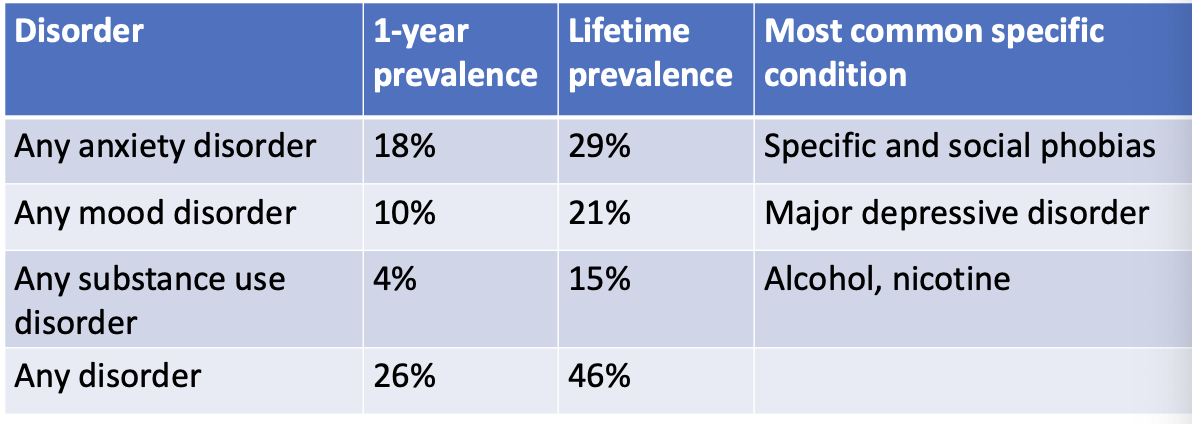Psychopathology: Week 1
1/20
There's no tags or description
Looks like no tags are added yet.
Name | Mastery | Learn | Test | Matching | Spaced |
|---|
No study sessions yet.
21 Terms
What are the elements/factors that contribute to something being deemeed “psychopathological?
1) Suffering
2) Maladaptation
3) Statistical Deviancy
What persepecitve were early versions of the DSM based on?
Psyhcoanalytic perspectives, disorders were described in terms of unconscious psychological conflicts and drives
DSM-II depression diagnoses
Manic-depressive illness, depressed type: consisted exclusively of depressive episodes, characterized by severely depressed mood and by mental and motor retardation progressing occasionally to stupor.
Depressive neurosis: excessive reaction of depression due to an internal conflict or to an identifiable event (like loss of loved object)
What was a primary problem with DSMs before DSM III?
Reliability
DSM-III was published as a reaction to the problem of interrater diagnostic reliability (the extent to which two independent experts agreed on diagnosis)
How did they improve reliability with the DSM-III?
They started having checklists of symptoms— “Research Diagnostic Criteria”
Mental disorder vs psychopathology
Mental disorder: DSM-based classification system
Psychopathology: more broad, refers to any form of psychopathology (including disorders in DSM, individual symptoms in DSM, or other diseases, behaviors, feelings, cognitive styles, etc.
What are some advantages of classifying mental disorders as the DSM does?
relatively simple, concrete definitions
provides common nomenclature
systematic measurement and communication in research
economic and political implications (such as resource allocation)
may be validating to have a name and “explanation”
What are disadvantages of classification?
possible stereotyping and stigma
may affect how blame and responsibility are placed (may blame individuals vs. the disorder, vice versa)
Does it just create highly artificial categories?
Incidence, prevalence, lifetime risk
Incidence: proportion of new cases of a condition in a given period of time (example: 1-year incidence)
Prevalence: proportion of individuals affected at a given time (example: point prevalence on Sept. 9 2025, 1-year prevalence during 2024, lifetime prevalence: proportion of people in a population who have suffered from the condition at some point in their life, such as proportion of people in the classroom who have developed Alzheimer's)
lifetime risk: proportion of individuals in a population who will develop the condition in their life, assuming they live long enough; (ex: proportion of people in the classroom who will likely develop Alzheimer's)
Whats the prevalence of anxiety disorders?

Whats the prevalence of mood disorders?

What’s the prevalence of substance use disorders?

Whats the prevalence of mental disorders?

How does prevalence of “serious” mental illnesses vary across demographics (gender, age, race)?
Females have higher prevalence rates
Younger ages have higher prevalence rates
Multiracial groups have higher prevalence rates
How is the “burden” of mental disorders quantified?
A popular way is “disability adjusted life years” (DALY)
years of life lsot due to premature death
years lived with disability due to illness, injury, impairment
DALY= years lived with disability and years of life lost
What mental disorder has the highest societal impact?
Depressive disorders
What are strengths of observational designs?
Strengths can include external validity (generalizability) and a large sample size
What are the weaknesses of observational designs
Weaknesses can include poor causal inference (internal validity)
What are the strengths and weaknesses of experimental designs?
Strengths: improved causal inference (internal validity)
Weaknesses: poor external validity and limited sample size
Quasi-experimental designs
Sometimes called “natural experiments” cause there is a manipulation of sorts but not done by the expeirmenter, rather by “nature”
— example: natural disaster, adoption, twins
Euphemistic treadmill
a term that is neutral but over time develops negative connotations
Ex: “Intellectual Disability:” moron, idiot, imbecile
“abnormal” is seen this way, which is why it is now Psychopathology